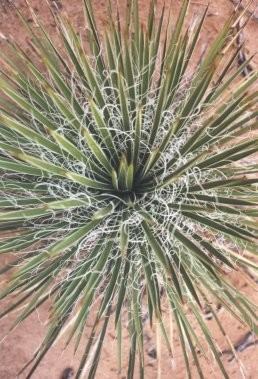The Narrow Leaf Yucca is very common in the red rock foothills and canyons of
northern
 Arizona
and southern Utah. Its leaves are light green and typically about 15
inches long. From the center of the leaves, a flower stalk emerges in
early spring and grows rapidly to about five feet. A long cluster of
pale sphere-shaped flowers blooms in late spring. The fruit is a
large, spherical pod with many medium seeds. When the pod ages, it becomes woody
and splits open to disperse the seeds. Arizona
and southern Utah. Its leaves are light green and typically about 15
inches long. From the center of the leaves, a flower stalk emerges in
early spring and grows rapidly to about five feet. A long cluster of
pale sphere-shaped flowers blooms in late spring. The fruit is a
large, spherical pod with many medium seeds. When the pod ages, it becomes woody
and splits open to disperse the seeds.
|
Yucca root, known as amole, can be pounded and thrashed in cold water
until sudsy, and is still used today as a shampoo. |
Native Americans used the
narrowleaf yucca's sword-like leaves to make baskets and sandals. Yucca roots were used for soap, and the base of the plant was
roasted and eaten. The young flower stalks of the Narrowleaf yucca were
eaten occasionally, or roasted or dried for winter. Yucca leaf fiber was
the single most important source of cordage in the Southwest. The flesh
was chewed off or soaked or boiled, and pounded to extract the fibers.
Yucca fibers were used to make belts, sandals, nets, ladders, matting
and baskets. |

